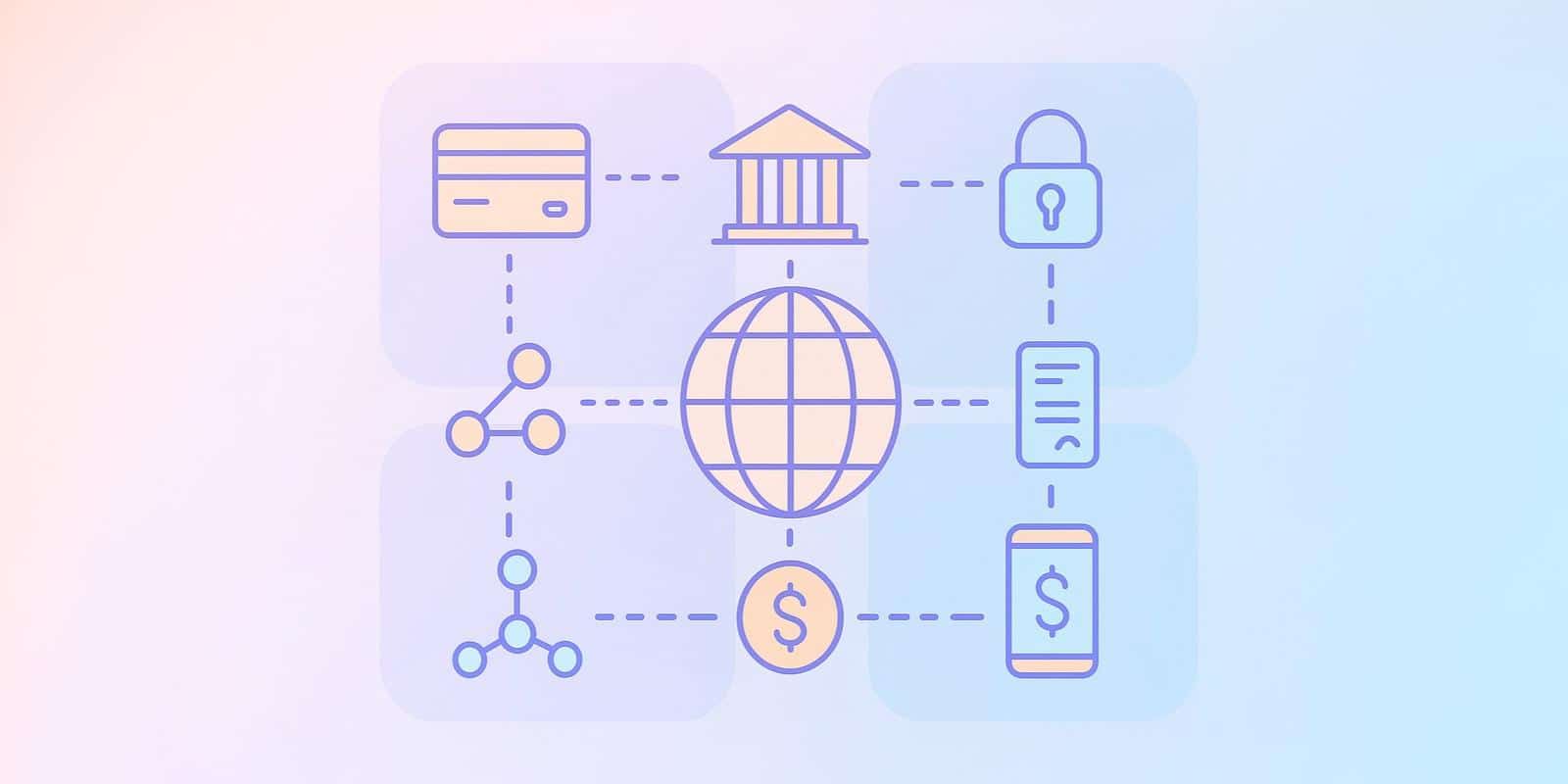SaaS платежі
Що таке SWIFT?

Що таке SWIFT?
SWIFT (Товариство всесвітніх міжбанківських фінансових телекомунікацій) — це глобальна мережа, яка забезпечує передачу даних фінансових транзакцій між банками та фінансовими установами.
Він використовує свою SWIFTNet для послуг зв'язку, програмного забезпечення та інфраструктури, але не зберігає кошти, не керує рахунками та не завершує транзакції.
Яка історія SWIFT?
Ось огляд SWIFT:
- Дата: Запущено у 1973 році в Брюсселі 239 банками з 15 країн.
- Мета: Створено, щоб замінити систему Telex, яка була повільною та схильною до помилок.
- Зростання: Розширювався протягом 1980-х років, щоб охопити брокерів-дилерів, біржі та клірингові організації.
- Сьогодні: Важливий для глобальних фінансів, що об'єднує понад 11 000 установ у понад 200 країнах.
Чому SWIFT домінує?
SWIFT популярний, тому що:
- Масштаб: Глобальне охоплення цієї мережі фінансових повідомлень є значним.
- Безпека: Надійні стандарти та довірена інфраструктура
- Стандартизація: Універсальні, надійні формати повідомлень
- Інновації: Нові типи повідомлень та засоби звітування
- Мережевий ефект: Широке впровадження забезпечує лояльність та довіру
Як працює SWIFT?
Ось триетапний процес роботи SWIFT:
- Кожна установа отримує BIC (код SWIFT), що ідентифікує її назву, країну, місто та відділення
- Банки надсилають стандартизовані повідомлення (платіжні доручення, операції з цінними паперами тощо) через SWIFTNet
- SWIFT сам по собі не переміщує гроші — перекази виконуються банками-кореспондентами
Що таке коди SWIFT/BIC?
Ось деякі факти про коди SWIFT/BIC:
- унікальні ідентифікатори для банків та фінансових установ
- формат: 8–11 символів (код банку + код країни + код місцезнаходження + код філії)
- використовуються для міжнародних банківських переказів та платежів SEPA
- забезпечують точну маршрутизацію транскордонних платежів
Скільки часу займають перекази SWIFT?
Зазвичай, перекази SWIFT займають 1–5 робочих днів. Однак, в середньому, вони тривають близько 18 годин, причому близько 66% надходять протягом одного дня
Затримки можуть виникати через:
- банки-посередники
- країна призначення та часові пояси
- запобігання шахрайству та перевірки на відповідність
Які існують альтернативи SWIFT?
Альтернативи SWIFT прагнуть пропонувати послуги з різною швидкістю обробки, витратами або регіональною спрямованістю.:
- Ripple (XRP Ledger): На основі блокчейну, майже миттєві платежі
- SEPA: Швидкі, недорогі перекази в межах Європи
- Національні системи: наприклад, Fedwire (США), CIPS (Китай)
|
Функція |
SWIFT |
Ripple (XRP Ledger) |
SEPA |
|
Засновано |
1973, Брюссель |
2012, США |
2008 (ініціатива ЄС) |
|
Покриття |
Понад 11 000 установ, понад 200 країн |
Понад 55 країн, кількість зростає |
36 європейських країн |
|
Швидкість транзакцій |
1–5 робочих днів (сер. ~18 год.) |
Секунди до хвилин |
Того ж дня або наступного дня |
|
Витрати |
Відносно високі (комісії посередників) |
Нижчі комісії, але ризик волатильності обмінного курсу |
Низька вартість (в межах ЄС) |
|
Метод розрахунків |
Лише повідомлення (банки-кореспонденти) |
Прямі розрахунки на основі блокчейну |
Традиційні банківські перекази |
|
Основний варіант використання |
Глобальний стандарт фінансових повідомлень |
Міжнародні криптоплатежі в режимі реального часу |
Перекази євро в межах ЄС/ЄЕЗ |
|
Регулювання |
Високо регульовані, нагляд центрального банку |
Все ще розвивається, змішане глобальне регулювання |
Фінансові регуляції ЄС |
Що таке соціальний доказ і як він застосовується до SaaS?
SWIFT застосовує суворі стандарти безпеки через свою структуру контролю безпеки клієнтів (CSCF).
Ключові заходи включають:
- обмежений доступ до інтернету
- багатофакторна автентифікація
- доступ за принципом найменших привілеїв
- шифрування та безперервний моніторинг
- протоколи реагування на інциденти
- Фінансові регуляції ЄС
Ці заходи стосуються конфіденційності, цілісності та доступності глобальних фінансових повідомлень.
Висновок
Розміри SWIFT, функції безпеки та заяви про неупередженість мають значення для його поширеності у глобальних мережах фінансових комунікацій.
Проте, вона стикається зі зростаючою конкуренцією з боку блокчейн-рішень, таких як Ripple, та регіональних систем, таких як SEPA. Майбутнє транскордонних платежів може бути гібридним підходом, при якому SWIFT збереже глобальне охоплення, але швидші альтернативи займуть нішеві ринки.